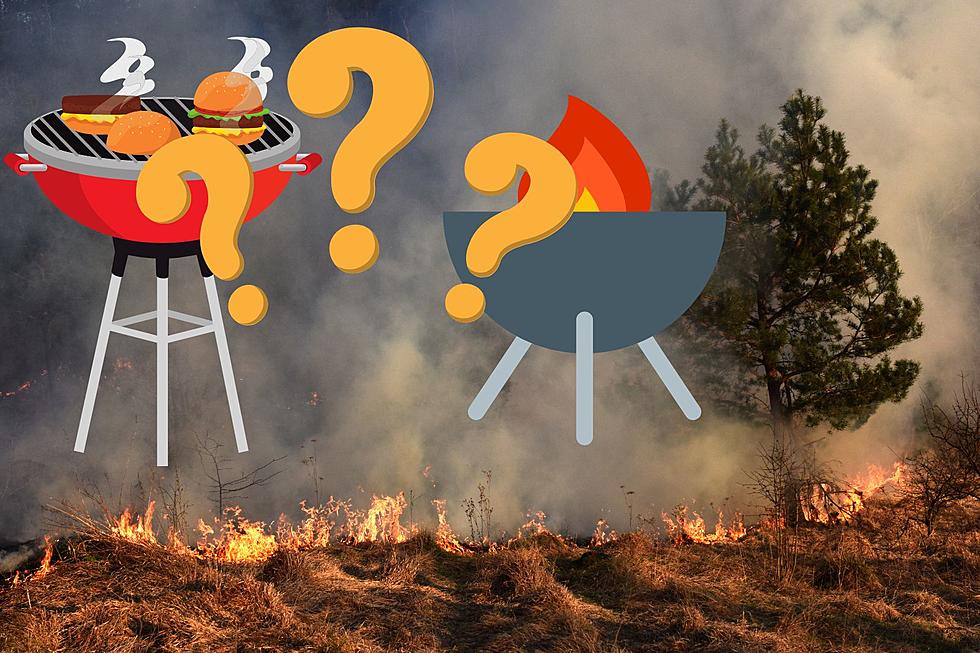
😠 Why are NJ traffic lights so (bleeping) long?
🔺 How do they determine how long traffic lights stay red and green in New Jersey?
🔺 Does New Jersey really have longer yellow lights than other states?
🔺 New Jersey is home to the longest red light in the United States. Where is it?
You have questions. We have answers.
A frustrated New Jersey 101.5 listener wrote to ask about the traffic light at Route 1 and Franklin Corner Road in Lawrence Township, Mercer County.
“How come the light is green for like a second? I wait on Franklin Corner for what seems like 15 minutes every morning to turn left onto 1. Is there some kind of formula?”
Have you ever wondered why you seem to spend an eternity sitting at some traffic lights in New Jersey, while others seem to change in a blink?
Far from random, there is actually a great deal of science and research that goes into the installation, timing and operation of every light and signal in the great Garden State.
Keep reading for everything you ever wanted to know about how traffic lights work in New Jersey.
What governs the use and operation of traffic signals in New Jersey?
The New Jersey Department of Transportation uses the Manual on Uniform Traffic Control Devices (MUTCD) to determine the minimum standards governing stop signals and other traffic control devices. The MUTCD is published by the Federal Highway Administration.
What determines how long a light stays red or green in New Jersey?
According to the NJDOT, the timing of green traffic signals is determined by a combination of factors. These factors include vehicular volume, pedestrian volume, road layout, and the goals of the local traffic management plan.
Traffic signal timing for yellow and red lights is the amount of time allocated for a vehicle to clear an intersection before the next phase of the traffic signal begins.
The determination of clearance time is typically based on the posted speed limit on the approach and the physical characteristics of the intersection. The goal is to keep traffic flowing smoothly and safely while providing adequate time for pedestrians and other vulnerable road users to cross the street.
Does the timing of lights change based on the time of day?
Yes, the timing of a traffic signal can vary based on the time of day. For example, during peak commuting times in the morning and evening, more green time is allotted to Route 1 to keep traffic flowing.
Are there minimum durations for lights?
Yes. According to the MUTCD: The minimum times allocated in traffic signal timing and operation should be as follows:
⬛ Actuated through movements: 7-second green
⬛ Lead left turn movements: 5-second green arrow
⬛ Yellow clearance: 3 seconds
⬛ Yellow arrow clearance: 3 seconds
⬛ All red clearance: 2 seconds
⬛ All red arrow clearance: 2 seconds
That doesn’t seem like a lot of time.
Well, that is merely the minimum starting point. There is a lot more that goes into the timing based on the speed of vehicles and the width of the intersection traversed…and since you asked:
NJDOT uses the following formula:
Total clearance time = T + V/2a + (W + L)/V
Where T= Perception time (1 second)
a= Deceleration (10 ft/sec)
L= Length of vehicle (20ft.)
W= Crossing width
V= Velocity in ft/sec
By inserting the variables of W and V in the equation, the designer is able to calculate the total clearance time (yellow + all red). The NJDOT rule for calculating the yellow change interval is one second for every 10 miles per hour (minimum of 3 seconds). For speeds above 30 mph, the yellow time must be rounded upward.
EXAMPLES:
35 mph = 4 seconds yellow
45 mph = 5 seconds yellow
55 mph = 6 seconds yellow
So, what about that light at Route 1 and Franklin Corner Road?
The traffic signal at Route 1 and Franklin Corner Road is a great example of a light with variable green time that is determined by the time of day and the volume of traffic at the intersection.
For example, during rush hour, traffic on Route 1 receives approximately 30 seconds of green time, and the traffic on Franklin Corner Road receives approximately 7 seconds
What are those cameras on top of a traffic light? I am being watched?
Yes, and no.
There are a variety of ways that traffic signals can adjust their timing. Using a camera device to “see” a vehicle at the intersection can cause the traffic light to begin a cycle.
This is called Image Vehicle Detection.
All new traffic signals installed in New Jersey are supposed to incorporate Image Vehicle Detection.
Are they checking my speed?
No. Red light cameras were outlawed in New Jersey due to multiple questions about their accuracy and reliability.
So, traffic lights are not just on a steady timer?
Nope.
Traffic lights can be highly advanced with technologies to help drivers spend the least amount of time sitting in traffic. Aside from the cameras mentioned above, sensors can be placed in the pavement of the intersection. You’ve probably seen what looks like rectangles cut into the asphalt. That’s a pressure-sensitive plate that can trigger a light’s cycle.
If you want to “make all the lights” is there a particular speed to travel?
The NJDOT advises that “sotorists should always drive at or below the speed limit.”
There is, at least, some anecdotal evidence that traveling the speed limit (or just below) will give you a better chance of “making the lights.” The speed limit is one of the factors used when determining how long lights stay red, yellow and green.
How are speed limits set on New Jersey’s roads?
The speed limits on New Jersey’s roadways are determined by law based on the type of road (for example an Interstate) and geographic area (rural or urban) following the guidance in the Federal Highway Administration’s (FHWA) Manual on Uniform Traffic Control Devices (MUTCD).
What determines whether an intersection gets a light, or a stop sign?
This is determined by traffic control engineers, using the MUTCD.
Is there a way to ask the state to install a light at a dangerous intersection?
Yes, a request to install a traffic light at a state-owned and/or operated intersection would be sent to the NJDOT.
The Department would evaluate the request and if a signal is warranted, the requester – typically a municipality – is required to contribute 25 percent of the cost for the signal installation.
How much does it cost to install and operate a traffic light?
It costs approximately $300,000 to install a traffic signal and approximately $1,000 per year to operate it.
It seems like New Jersey lights stay yellow longer than in other parts of the country. Is this true?
The length of a yellow light interval is determined by traffic control engineers following the standard engineering practices and mathematical formulas published in the MUTCD and by the American Association of State Highway and Transportation Officials (AASHTO).
In New Jersey, as in most states, the formula used to determine the timing of a yellow signal considers the speed limit of the road and the width of the intersection.
Where did you get all this stuff?
Glad you asked. A lot of the data and formulas were taken from NJDOT memos and the Manual on Uniform Traffic Control Devices.
However, Elizabeth Galamba at the New Jersey Department of Transportation did a great job of breaking highly technical data down into something I could understand, and relay to you. Thank you, Lizzy.
Eric Scott is the senior political director and anchor for New Jersey 101.5. You can reach him at eric.scott@townsquaremedia.com
Click here to contact an editor about feedback or a correction for this story.
OMG! Cutest pets in New Jersey!
More From New Jersey 101.5 FM









